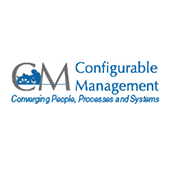SAP MM
Filter By
Browse By
- SAP Analytics and AI
- SAP Application Development and Integration
- All SAP Application Development and Integration
- SAP ABAP
- SAP ABAP Development Tools
- SAP ABAP Test Cockpit
- SAP API Management
- SAP BAPI
- SAP Basis
- SAP BRF
- SAP Business Application Studio
- SAP CMS
- SAP Design Studio
- SAP Development Tools
- SAP DevOps
- SAP EAI
- SAP EDI
- SAP Extension Suite
- SAP Fiori
- SAP Fiori Elements
- SAP Integration Suite
- SAP Low Code Application Development
- SAP Low Code Automation
- SAP Netweaver
- SAP Release Management
- SAP UI5
- SAP Web Application Server
- SAP Web IDE
- SAP Business Process Management
- SAP Center of Excellence
- SAP CIO
- SAP Customer Experience
- SAP Data and Data Management
- All SAP Data and Data Management
- SAP BW
- SAP BW/4HANA
- SAP Crystal Reporting
- SAP Data Archiving
- SAP Data Center
- SAP Data Governance
- SAP Data Integration
- SAP Data Migration
- SAP Data Quality
- SAP Data Services
- SAP Data Strategy
- SAP Data Visualization
- SAP Data Warehouse Cloud
- SAP DMS
- SAP Document Control
- SAP EIM
- SAP ETL
- SAP ETL Tools
- SAP HANA
- SAP HANA Administration
- SAP HANA Deployment Infrastructure
- SAP HANA Studio
- SAP Master Data
- SAP Master Data Governance
- SAP MDM
- SAP Enterprise Architect
- SAP Enterprise Asset Management
- SAP ERP
- SAP Finance
- All SAP Finance
- SAP Accounting
- SAP AR AP
- SAP Asset Accounting
- SAP Billing Systems
- SAP BPC
- SAP BRIM
- SAP Cash Management
- SAP Central Finance
- SAP Controlling
- SAP COPA
- SAP Cost Center Accounting
- SAP e-invoicing
- SAP FICO
- SAP Finance Automation
- SAP Financial Closing Cockpit
- SAP Financial Consolidation
- SAP Financial Planning
- SAP FX Risk
- SAP General Ledger
- SAP Global Tax Management
- SAP Hyperion
- SAP Order to Cash
- SAP Payment Processing
- SAP Profitability Analysis
- SAP Rebate Management
- SAP S/4HANA Finance
- SAP Universal Journal
- SAP Governance Risk and Compliance
- SAP Human Capital Management
- SAP Intelligent Technologies
- SAP Platform and Technology
- All SAP Platform and Technology
- SAP Business Technology Platform
- SAP Cloud Connector
- SAP Cloud Integration Platform
- SAP Cloud Migration
- SAP Cloud Platform
- SAP Cloud Providers
- SAP Cloud Strategy
- SAP Container Platform
- SAP Digital Asset Management
- SAP Digital Integration Hub
- SAP Digital Signature
- SAP HANA Enterprise Cloud
- SAP HEC
- SAP Hyperscalers
- SAP Infrastructure
- SAP Messaging
- SAP Smart Forms
- SAP Quality and Testing
- SAP Security
- SAP Spend Management
- SAP Supply Chain Management
- All SAP Supply Chain Management
- SAP APO
- SAP Asset Management
- SAP Business Network
- SAP Digital Manufacturing Cloud
- SAP Digital Twin
- SAP EWM
- SAP IBP
- SAP Inventory Management
- SAP Label Printing
- SAP Logistics
- SAP Manufacturing
- SAP Manufacturing Automation
- SAP MES
- SAP MII
- SAP MM
- SAP MRO
- SAP MRP
- SAP Order Management
- SAP Plant Maintenance
- SAP PLM
- SAP Production Planning
- SAP S&OP
- SAP SD
- SAP SPM
- SAP Supply Chain Planning
- SAP Track and Trace
- SAP Transportation Management
- SAP System Administration
Supply Chain Management: SAP MM
Customers need companies to deliver what is offered. Thus, organizations need to make sure materials are always kept in proper quantities and without shortages or gaps in the supply chain. One way an organization can easily meet its business demands is with the help of SAP.
What Is SAP MM?
SAP Materials Management (MM) module is an SAP ERP component that helps organizations with materials management, inventory management, and warehousing. It is one of the most important modules of SAP ERP because it supports procurement and inventory management for day-to-day operations. An organizational master data structure of plant, valuation area, storage location, purchasing organizations, and purchasing groups supports basic transactions.
Supply Chain Management: SAP MM
Customers need companies to deliver what is offered. Thus, organizations need to make sure materials are always kept in proper quantities and without shortages or gaps in the supply chain. One way an organization can easily meet its business demands is with the help of SAP.
What Is SAP MM?
SAP Materials Management (MM) module is an SAP ERP component that helps organizations with materials management, inventory management, and warehousing. It is one of the most important modules of SAP ERP because it supports procurement and inventory management for day-to-day operations. An organizational master data structure of plant, valuation area, storage location, purchasing organizations, and purchasing groups supports basic transactions.
Key capabilities include:
- Material management
- Procurement process management
- Master data management
- Inventory management
- Material requirements planning
- Invoice verification
Master data is the foundation for all transactions within SAP MM. It has two important components — material and vendor. Creating solid master data is the key to reducing repetitive work and minimizing errors. Some examples of master data are material master, service master, vendor master, purchasing info record, source lists, and quotas.
Advantages of SAP MM:
- Minimizes the cost of operations
- Reduces inventory losses
- Activities lead to a smoother and efficient process
Mitigate your risks by:
- Tracking the data
- Increase your sales
- Stock balancing
- Promote the products to help move inventory
- Offer customer discounts to help move inventory
It is important to note that with SAP S/4HANA and SAP MM, there are several functionalities that have changed. In SAP S/4HANA, the Material Ledger function is mandatory to support flexible valuation methods in multiple currencies. Post Goods Receipt against the Inbound Delivery is a feature of the SAP Fiori app. It has ability to search by Inbound Delivery and other attributes. The Fiori app allows for a better user experience, improved performance, and less load on databases.
Further Insights for SAPinsiders
- How to Create a Global Template to Configure SAP MM Processes in Implementations and Rollouts. S. Baraneedharan, an SAP Consulting Expert, explains the steps involved in creating a template for configuring an SAP materials management (MM) process.
- Improve Current Forecast Models in SAP MM. Gaetano Altavilla, Associate Professor of Economic Policy at the University of Naples, shares in his article how to improve your forecast accuracy by placing weights on individual forecasts. It also explores the idea of combining forecasting models.
- Understanding the Key Aspect of Supply Chain Visibility. Kumar Singh, SAPinsider Research Director, describes supply chain visibility, how organizations struggle achieving it, and one method to kickstart your approach.
8383 results
-

 Premium
Premium
18 Techniques for Locating the Underlying Data of a Screen Field
Reading time: 2 mins
SAP’s three-tiered architecture is the backbone of an R/3 infrastructure. It’s what makes an R/3 system flexible, reliable, and open, all at the same time. It’s also what makes locating underlying data, at times, so inherently difficult. For example, when you need several fields from a transaction for a report or an enhancement, you will…...…
-

 Premium
Premium
Enabling Point-and-Click Data Entry Assistance for Your BAPI Applications
Reading time: 2 mins
Within SAPGUI, facilities that help users enter data are known as Input Help. In simple cases, SAPGUI’s Input Help presents the user with a list of codes and descriptions. For more complex object types, Match Codes are used to enable the user to search on more expansive sets of criteria. You can provide a similar…...…
-

 Premium
Premium
Is It Time to Revisit Your SAP Security Infrastructure?
Reading time: 2 mins
All too often SAP implementation projects don’t take security beyond the application level, where security and authorization are often regarded as one and the same. To ensure adequate protection, security measures must be factored into all layers of the SAP infrastructure. With their client/server architecture, SAP systems include many components that exchange information, each of…...…
-
-

 Premium
Premium
A Developer’s Guide to the New ALV Grid Control
Reading time: 2 mins
Within an SAP system there is a lot of data that needs to be reviewed, maintained, and interpreted. Granted, the effort to create a classical list for just simple output of data is minimal, but amass a few lists across a few applications, each created by a different developer, and users may find they have…...…
-

 Premium
Premium
Defining SAP Service Level Agreements: An IT Manager’s Survival Guide
Reading time: 2 mins
Given the complexity and investment inherent in large SAP environments, it is quite likely that you and your IT colleagues are being asked to measure and ensure a certain level of service for users of your SAP systems. A Service Level Agreement (SLA) can be of enormous benefit, because it directly addresses a core frustration…...…
-

 Premium
Premium
Need to Understand a BAPI’s Parameters? Test-Drive the BAPI Inside SAP!
Reading time: 2 mins
To write a BAPI-enabled application, you must understand all the relevant parameters of every BAPI you want to use in your application. This article shows you how to test-drive a BAPI inside R/3’s test environment in order to accelerate the learning process. Without writing source code, you can find out which parameters, in which combination,…...…
-

 Premium
Premium
Everything a BAPI Programmer Needs to Know About the Business Object Repository
Reading time: 2 mins
Trying to develop or use SAP’s Business Application Programming Interfaces (BAPIs) without a solid understanding of what they are, how they are defined in the Business Object Repository (BOR), and what the difference between a BAPI and the ABAP Function Module underneath is, leads to errors and frustration. Beginners are often confounded as to how…...…
-
-

 Premium
Premium
Dynamic Documents: Completing the New Face of Reporting
Reading time: 2 mins
Screen programming and list programming used to occupy two different worlds. Controls programming changed that. The ALV Grid Control allows you to replace tabular lists with control-based tables on screens, and the SAP Tree Control provides a new way of displaying hierarchical lists. But how can you display unstructured output in a control-based environment? Starting…...…
-

 Premium
Premium
Write Costing-Based CO-PA Reports Your Readers Will Trust — Five Secret Tricks to Building General Ledger Reconciliation into Your ‘Profitability Analysis’ Data
Reading time: 2 mins
Section 1 of this article is especially for people who consider themselves CBR (Confused Beyond Recognition) by R/3’s “distributed” approach to accounting.1 Section 2 expands on this topic while specifically identifying some needed background information for examining CO-PA report challenges. Section 3 puts a finger on both some well-known and some not-so-well-known integration trouble spots…...…
-

 Premium
Premium
COM4ABAP: A Simpler, Cleaner, Universal Approach to Harnessing COM Objects in ABAP
Reading time: 2 mins
The SAP DCOM Connector allows communication between an R/3 system and an external application via the “outside-in” approach, but there are times when you will actually need the process to work in the opposite direction. While this was possible in the past, it was by no means easy! Now, with Release 4.6D of the RFC…...…
Featured Insiders
-

Dmitry Belan
Self SAP Logistic Subcontractor
-

Jeff Smith
Loudoun Water
-

Rohana Gunawardena
Director - SAP Practice, Exium Inc.
Become a Member
Unlimited access to thousands of resources for SAP-specific expertise that can only be found here.
Upcoming Events
Related Vendors
Your request has been successfully sent


